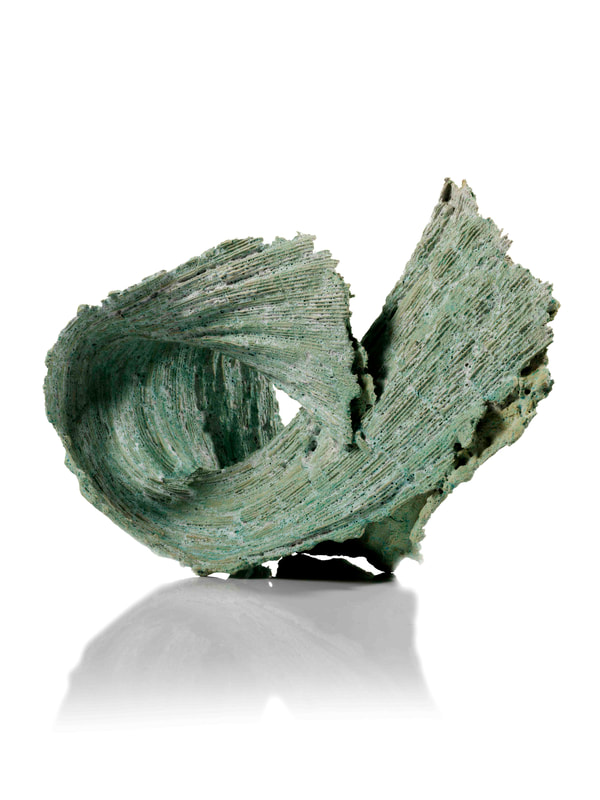|
METTEMAYA AND HER SPACE WITHIN A SPACE
CARMEN HUST | ARTICULATE #17 | OCTOBER 2018 The Danish artist MetteMaya (1973), generates her drive through a natural necessity to transform thoughts into shapes, to develop a language in which she can communicate and discover. To define space and create a connection between internal and external worlds. The preferred media of MetteMaya is clay, and clay alone, as she ascribes clay the qualities of the earth, of softness and of change. “Clay is so responsive to immediate thoughts and ideas. It goes through so many different stages. From soft earth to fired rock. Its process”, MetteMaya adds. MetteMaya works from ideas of a concept or a theory that she’s aiming to explore. She can dwell on it or take a detour. She can let the hands do their own thinking or she can just play and fabulize. Ideas are changeable. If her work is pre-thought, it evolves from a particular concern about something she does not understand and therefore want to investigate. Sometimes shapes can help her develop words, so she can explain her findings.
To MetteMaya the key element of creating a good composition, comes straight from a personal exploration of ideas with balanced aesthetics. Her work is influenced by the French philosopher Gaston Bachelard, who writes about spaces and elements with deep philosophical reflections (Bachelard, 1958). |
MetteMaya is also inspired by the psychoanalytical studies of Melanie Klein and her theories on internal objects as well as Donald Winnicott’s ideas on transitional objects and object relation. Working with clay is for MetteMaya an equal dealing with objects and how they become of use and meaning.
In very short; the Kleinian term 'internal object' means a mental and emotional image of an external object that has been taken inside the self. The character of the internal object is coloured by aspects of the self that have been projected into it. A complex interaction continues throughout life between the world of internalized figures and objects and in the real world (which are obviously also in the mind) via repeated cycles of projection and introjection. “Don’t we all deal with these objects within the constructive/creative space...?!”, MetteMaya asks.
Winnicott explores the phenomenon of the ‘transitional object´ in the area of human experience, meaning, the area where the experience transpires. This area is the connection between the inner reality and external reality and the bridge between the subjective experience and objective reality. The transitional area is between the ´inner reality’ which contains the child’s illusion of creation and control of others and the external environment which includes the ‘not me’ concept and the external objective reality (Rudnytsky, 1994). |
Freud would talk about the transition phenomena and conceptualize it as the journey from the pleasure principle to the reality principle. Jung would talk about symbols and the collective consciousness and alchemy also inspiring MetteMaya, who adds:
“I just wanted to create a space within a space. To have something soft in the middle of a mess. To mix all the clays and different materials. I left it in the corner of my workshop after bisque fire for a long time because I thought it was strange. Not ready to be contained. Then I glazed it and mistakenly used cobalt oxide instead of copper, and it became horrible blue. So, without thinking and still hot in the kiln, I went glaze crazy, just wanting to cover up that nice shiny porcelain blue, with every glaze bucket I had. It all cracked and bubbled and lost its shape. And I love it. I sometimes wish I could throw myself in the kiln and go through the same transformation.” In her exploration of the relationship between the material and the thought, MetteMaya is still searching within a confined space, where objects have a purpose.
This article about METTEMAYA takes part of the release of ARTICULATE #17. Check out the full release below
|
SUPPORTARTICULATE
www.articulate.nu SUPPORT Monday - Friday 8:00 - 16:00 [email protected] +45 30 48 19 81 Head Quarters VAT DK40953191 |
|








